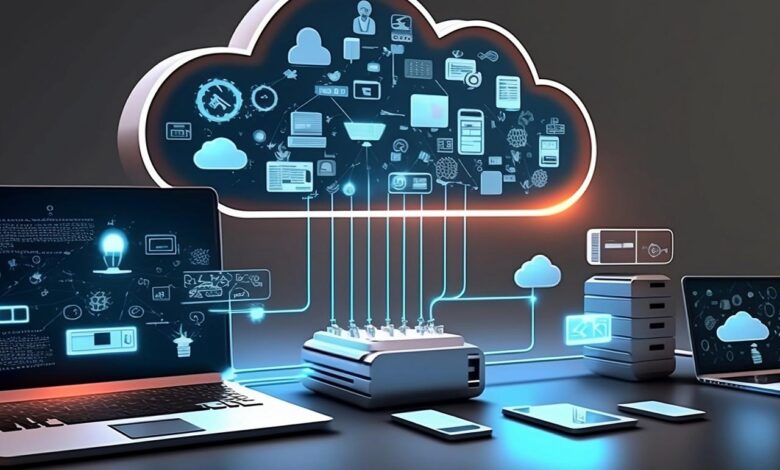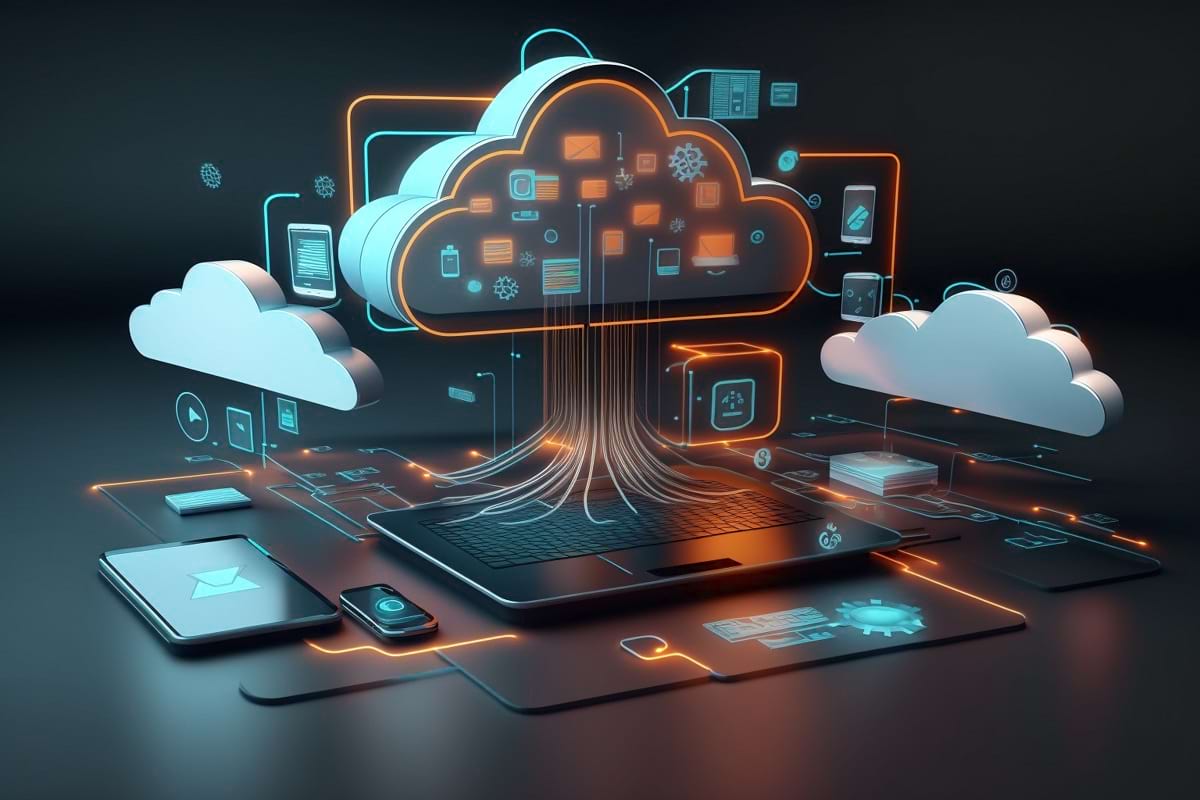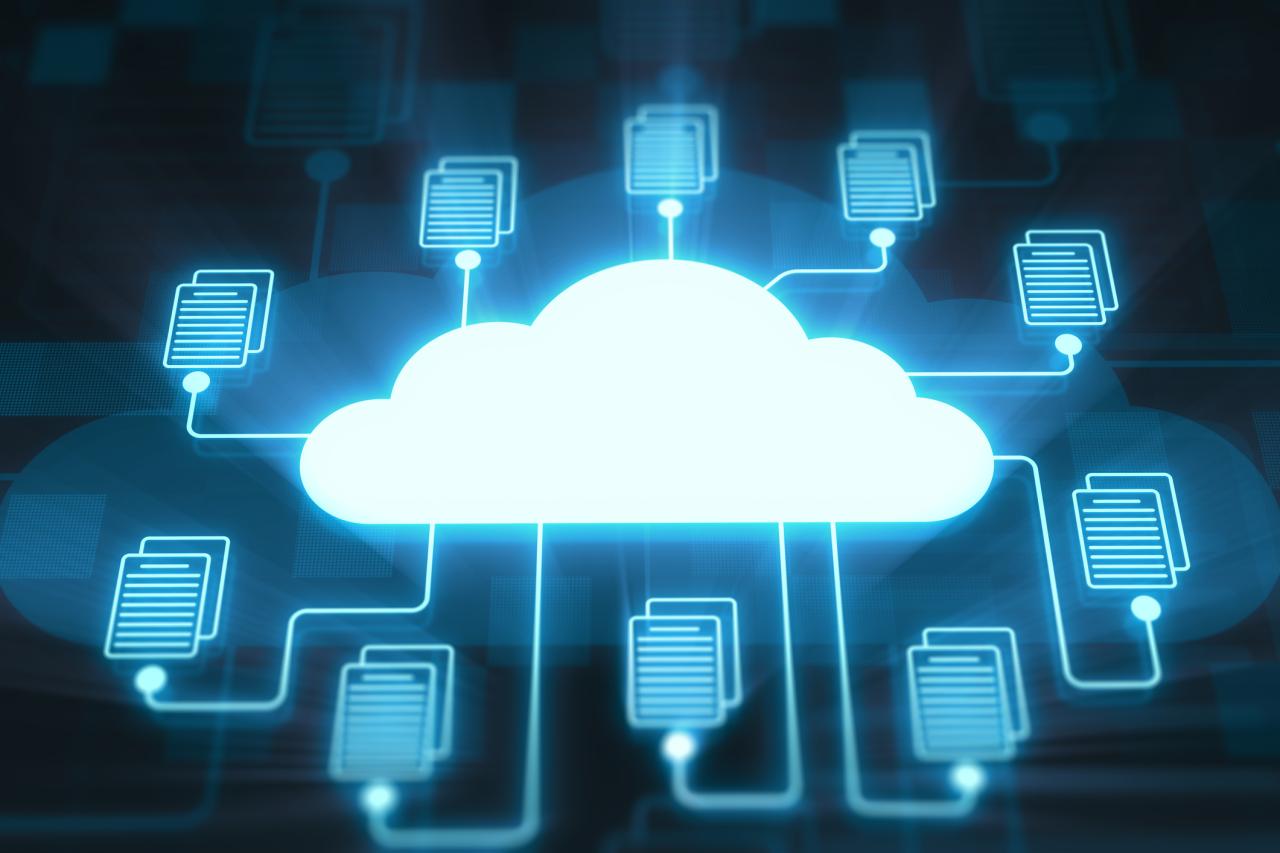Understanding Essential Cloud Computing Services

The world of technology has undergone a fundamental transformation in the past two decades, with cloud computing emerging as the dominant paradigm for how businesses and individuals consume and deliver digital resources.
It represents a monumental shift away from the traditional model of owning and maintaining all one’s own IT infrastructure, which was often prohibitively expensive, difficult to scale, and required constant, dedicated physical maintenance.
Today, the vast majority of digital operations, from simple email to complex machine learning models and global e-commerce platforms, are powered by cloud services offered by major providers like Amazon Web Services (AWS), Microsoft Azure, and Google Cloud Platform (GCP).
This revolutionary approach essentially rents out computing power, storage, and networking over the internet, allowing users to access sophisticated, enterprise-grade technology on an on-demand, pay-as-you-go basis.
This eliminates the need for massive upfront capital investment in hardware, enabling startups to compete with established giants and allowing enterprises to innovate with unprecedented agility.
Understanding the various service models and advantages of this technology is absolutely crucial for anyone navigating the modern digital landscape, regardless of whether you’re a small business owner, a software developer, or simply a modern consumer.
The utility of the cloud extends far beyond mere data storage, encompassing a rich ecosystem of tools that drive collaboration, enhance security, and ensure business continuity in the face of disaster.
The flexibility it offers is perhaps its greatest selling point, permitting organizations to effortlessly scale their resources up during peak demand or dial them back during slower periods, thus optimizing costs dramatically.
What Exactly is Cloud Computing?

Cloud computing is a model for enabling ubiquitous, convenient, on-demand network access to a shared pool of configurable computing resources (like networks, servers, storage, applications, and services).
These resources can be rapidly provisioned and released with minimal management effort or service provider interaction.
Think of it as plugging into a massive, remote utility for your computing needs, much like you plug into an electrical grid for power at home.
Core Cloud Service Models Explained
The services offered under the umbrella of cloud computing are generally categorized into three main models, each offering a different level of control and management responsibility to the user.
These models are famously remembered by their “as a Service” (aaS) nomenclature.
Infrastructure as a Service (IaaS)
Infrastructure as a Service (IaaS) provides the most fundamental layer of cloud computing. This is essentially the virtualized version of the physical data center environment.
What the Provider Manages:
A. The network infrastructure, including firewalls and routers.
B. Physical servers, housing the computer hardware.
C. Data storage devices.
D. The core virtualization layer (hypervisor).
What the User Manages:
A. Operating systems, such as Windows or Linux.
B. Middleware, including runtimes and application services.
C. The application itself, and all the corresponding data.
IaaS gives customers the maximum level of control over their computing resources, making it perfect for IT teams who want to move their existing on-premises infrastructure to the cloud without sacrificing command.
A typical example would be renting virtual machines (VMs) to run custom applications.
This model is ideal for developers who need to quickly set up and dismantle testing and development environments.
It allows for the easy migration of existing workloads to a more scalable and resilient infrastructure.
Platform as a Service (PaaS)
Platform as a Service (PaaS) abstracts much of the underlying infrastructure, offering a complete environment for developing, running, and managing applications. This model is primarily aimed at developers and software engineers.
What the Provider Manages:
A. Networking, servers, and storage.
B. Operating systems, automatically handled and patched.
C. Middleware, including essential software tools and databases.
What the User Manages:
A. The application code itself.
B. The application data.
PaaS provides a powerful framework that allows developers to focus purely on writing code and deploying their applications without getting bogged down in the complexities of managing the servers, operating systems, or networking hardware.
It significantly speeds up the development lifecycle.
Popular examples include environments for deploying web applications, where the cloud provider handles all the resource scaling and maintenance in the background.
This service promotes greater team collaboration and offers a streamlined path from coding to deployment.
Software as a Service (SaaS)
Software as a Service (SaaS) is the model most people are familiar with, as it delivers ready-to-use software applications over the internet, typically through a web browser. The user simply accesses the software.
What the Provider Manages:
A. The entire application stack, including the software itself.
B. All infrastructure: networking, servers, storage, operating systems, and middleware.
C. Data and application maintenance, including security patches and updates.
What the User Manages:
A. Nothing, except how they use the application and their own data within it.
SaaS is the most hands-off model, where the user has the least amount of control but also the least management burden.
Everyday examples include web-based email services, customer relationship management (CRM) software, and online productivity suites.
This model is highly accessible and eliminates the need for software installation or maintenance on local devices. It’s perfect for end-users who just need the functionality of the software to do their jobs.
Beyond the Big Three: Serverless Computing
While IaaS, PaaS, and SaaS are the foundational models, a newer and increasingly popular model is Serverless Computing, often called Function as a Service (FaaS). This goes a step further than PaaS.
How it Works:
A. Developers write and upload small, self-contained functions (code).
B. The cloud provider only runs the code when a specific event (a request, a database change) triggers it.
C. Users are billed only for the time their code is actively running, often down to the millisecond.
D. The infrastructure provisioning and scaling is completely invisible to the developer.
This model allows for enormous cost savings and instant scaling, as resources are only consumed during active computation. It completely removes the need to manage servers, even in the abstract PaaS sense.
Key Benefits That Drive Cloud Adoption

Moving from traditional on-premises IT to cloud services offers a multitude of compelling advantages that can dramatically impact a business’s bottom line and operational agility.
Unprecedented Scalability and Flexibility
The cloud’s ability to scale resources on demand is arguably its biggest draw. Businesses can instantly increase or decrease computing power, storage, or memory based on real-time needs.
A. Companies no longer need to over-provision hardware to handle peak traffic spikes, saving significant money.
B. Scaling up for a seasonal rush or a major product launch happens in minutes, not months.
C. This elasticity ensures that the application performs optimally, regardless of the load.
Significant Cost Savings
The shift from a capital expenditure (CapEx) model to an operating expenditure (OpEx) model is a major financial benefit.
A. Businesses avoid large, upfront investments in physical servers and data centers.
B. The pay-as-you-go pricing structure means you only pay for the exact resources you consume.
C. Costs associated with maintaining, cooling, and powering an in-house data center are eliminated.
D. IT staff are freed from hardware maintenance to focus on strategic business innovation.
Enhanced Data Security and Reliability
Reputable cloud providers invest colossal amounts of resources into security, often far exceeding what a single company could afford.
A. Providers offer advanced security features like automatic encryption, identity management, and threat detection.
B. Physical security of the global data centers is state-of-the-art, with multiple layers of protection.
C. Cloud platforms implement robust features for data loss prevention, backup, and disaster recovery.
D. Storing data in the cloud minimizes the risk of total loss from local hardware failure or physical emergencies.
Improved Collaboration and Mobility
The cloud’s inherent design fosters a new level of interconnectedness and access.
A. Employees can access their applications, files, and data from anywhere in the world with an internet connection.
B. This mobility is a cornerstone of modern remote and hybrid work models.
C. Centralized data access allows teams to collaborate on documents and projects in real-time, boosting productivity.
Faster Time to Market
Cloud infrastructure is instantly available, eliminating the lengthy procurement process for new hardware.
A. Developers can spin up test and production environments in minutes.
B. This speed allows organizations to quickly test new ideas, deploy new applications, and rapidly iterate on products.
C. The ability to deploy rapidly provides a significant competitive edge in fast-moving markets.
Cloud Deployment Models
Cloud services can be deployed in different environments, allowing organizations to choose the model that best suits their needs for control, security, and cost.
Public Cloud
The Public Cloud is the most common form, where the cloud infrastructure is provisioned for open use by the general public.
A. It is owned and operated by a third-party cloud service provider (e.g., AWS, Azure, GCP).
B. Resources are shared among many different customers, though logically isolated.
C. This model offers the lowest costs and the highest level of scalability and flexibility.
D. Users manage the software and data, while the provider manages all the underlying hardware.
Private Cloud
A Private Cloud is cloud infrastructure exclusively operated for a single organization.
A. It may be managed by the organization itself or by a third party, and may exist on-premises or off-premises.
B. It offers the highest level of control and security for highly sensitive data and strict regulatory environments.
C. It often comes with a higher cost and less dynamic scalability than a public cloud.
Hybrid Cloud
A Hybrid Cloud is a combination of two or more distinct cloud infrastructures (private, public, or both) that remain unique entities but are bound together by standardized technology.
A. It allows data and applications to move between the private and public environments.
B. This model provides the best of both worlds, allowing companies to use the public cloud for non-sensitive, high-variable workloads and the private cloud for critical, sensitive operations.
C. It’s an excellent strategy for organizations undergoing a phased migration to the cloud.
Multi-Cloud
Multi-Cloud refers to the use of cloud services from more than one distinct cloud provider (e.g., using AWS for storage and Azure for machine learning).
A. This strategy avoids vendor lock-in, reducing reliance on a single provider.
B. It improves overall resilience and availability by distributing workloads across different platforms.
C. It allows businesses to leverage the specialized best-in-class service from each vendor (e.g., Google’s strength in AI/ML).
The Major Cloud Service Providers
The cloud market is dominated by a few global technology giants, known as the hyperscalers, who own and operate massive networks of data centers around the world.
Amazon Web Services (AWS)
AWS is widely recognized as the pioneer and market leader in the cloud computing space.
A. It offers a vast, deep, and constantly expanding set of services, particularly in the IaaS space.
B. Key services include compute (EC2), storage (S3), and a comprehensive database portfolio.
C. Its massive global footprint ensures low latency and high availability worldwide.
Microsoft Azure
Microsoft Azure is a fierce competitor, particularly strong due to its natural integration with the vast ecosystem of Microsoft enterprise products.
A. It excels in hybrid cloud offerings, allowing seamless connections between on-premises and cloud environments.
B. Its services cover everything from IaaS to PaaS and a strong focus on AI/ML.
C. Azure is often the first choice for organizations already heavily invested in Microsoft software like Windows Server and SQL Server.
Google Cloud Platform (GCP)
Google Cloud Platform leverages Google’s expertise in large-scale data analytics, machine learning, and open-source technologies like Kubernetes.
A. GCP is known for its strengths in data analytics (BigQuery) and artificial intelligence services.
B. It provides a highly developer-friendly environment and a commitment to open-source solutions.
C. Its infrastructure is built on the same network that powers Google Search and YouTube, offering world-class performance.
Challenges and Considerations for Cloud Services
While the benefits are profound, migrating to and managing cloud services is not without its own set of challenges that need careful planning.
Managing Costs
The pay-as-you-go model, while cost-saving, can lead to uncontrolled spending if not properly monitored, often referred to as “cloud sprawl.” A. Effective cost management requires continuous monitoring and optimization of resource usage.
Security and Compliance
Although cloud providers offer strong security, the responsibility for securing the data itself often falls to the customer in a model called the Shared Responsibility Model. A. Users must properly configure security settings and ensure their data handling meets all regulatory requirements.
Vendor Lock-in
Relying too heavily on a single provider’s proprietary services can make it difficult and costly to switch platforms later. A. Adopting a multi-cloud strategy can mitigate this risk, promoting greater flexibility.
Performance and Latency
Cloud applications rely on an internet connection, and performance can be affected by network latency. A. Choosing the right regional data center nearest to the majority of users is crucial for minimizing lag.
The Future of Cloud Computing
The cloud is constantly evolving, with new trends and services emerging rapidly. Edge computing, which involves processing data closer to where it’s created, is a major trend.
This will reduce latency for critical, time-sensitive applications like autonomous vehicles.
Additionally, the integration of AI and Machine Learning into every layer of the cloud stack is making these powerful technologies accessible to all developers.
Furthermore, the push for greater sustainability is growing, with providers actively working to make their massive data centers more energy-efficient and carbon-neutral.
Conclusion
Cloud services have fundamentally redefined the landscape of information technology.
The flexibility and scalability they offer are unmatched by traditional IT models.
This powerful utility-based approach allows businesses to grow and contract resources instantly.
Cost-efficiency is achieved through the transparent and fair pay-as-you-go billing structure.
The depth of security offered by major cloud providers often surpasses internal capabilities.
Embracing the cloud is no longer optional; it is a necessity for modern competitiveness.
It empowers teams with unprecedented collaboration and global mobility.
The future of innovation will be inextricably linked to the capabilities of cloud computing.
Businesses must master these platforms to maintain agility and drive digital transformation.
Ultimately, cloud computing is the reliable engine of the modern digital economy.


